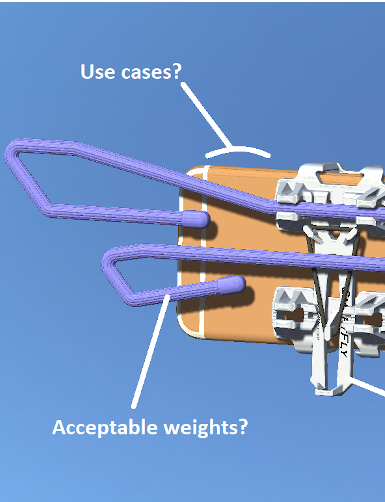When we talk about engineering and engineers, we often immediately think of wonky-looking people with calculators or graph paper doing hard math problems. We are surrounded by the precision technology created by engineers and use it every day, hopefully with very predictable results: the thing does what it’s supposed to do, every single time. These smart, driven people have used their technical skills to design hardware or software so that it behaves in known, repeatable ways. So that means that engineers are good at figuring things out before they build them, right? It seems reasonable to expect that when a customer with a product or device design concept goes to the engineers that those engineers should know exactly how long/how much is required to make it happen.
However, a quick study of engineering history reveals that this is far from the truth. Engineering design is at its core a creative process with a lot of iterations and backwards or sidewards progress along the way to completion. Having really well-defined specifications and requirements at the start of the process certainly helps, but it is quite common that there are multiple ways to solve a problem. The best solution may not be immediately evident, which is why engineers love to build prototypes and test them out. It is entirely normal to build a prototype which achieves 90% of the stated goals and then to find out that the remaining 10% is difficult or impossible to complete with the chosen approach. Back to the drawing board!

A quote from Thomas Edison about his invention of the incandescent lightbulb is a perfect example of this iterative, sometimes uncertain process: “During all those years of experimentation and research, I never once made a discovery. All my work was deductive, and the results I achieved were those of invention, pure and simple. I would construct a theory and work on its lines until I found it was untenable. Then it would be discarded at once and another theory evolved. This was the only possible way for me to work out the problem. … I speak without exaggeration when I say that I have constructed 3,000 different theories in connection with the electric light, each one of them reasonable and apparently likely to be true. Yet only in two cases did my experiments prove the truth of my theory. My chief difficulty was in constructing the carbon filament ... Every quarter of the globe was ransacked by my agents, and all sorts of the queerest materials used, until finally the shred of bamboo, now utilized by us, was settled upon.”
OK, so if creating new things is a completely uncertain process and nobody can tell for sure how much time or money it will take, how is anyone ever to succeed at it? The answer is to be conservative and realistic about how much resources are needed for an engineering project. If there is other previous work that is related or similar to the current project, that can be leveraged also as a basis for estimating the total time/spend. However, any new engineered product will have frustrating setbacks and will be difficult. Physical hardware products are especially this way, because unlike software products, they must be completely functional before they are released into the world. There is no such thing as an easy patch for a broken part!
Therefore, it is incumbent on entrepreneurs and consultants to be very mindful to ensure that projects are properly resourced so that an inevitable engineering setback is not a deathblow to the project. Many times, it is highly worthwhile to spend some extra time doing fundamental research before launching into detailed design. While it may seem wasteful to spend expensive engineering time on answering questions whose answers may not lead to the desired outcome, going far down a dead-end path is VASTLY worse.
Another Edison quote is a good finisher for this topic, “Genius is one percent inspiration and ninety-nine percent perspiration.” BES always does its level best to accurately estimate the time and budget to bring an idea to fruition, but there is also always a good bit of conservatism built into those estimates. It is also common that BES will ask a new client to sign up for a discovery phase to evaluate what approaches are best pursued and to do the best possible job of estimating total project costs and timelines. We strive to under-promise and over-deliver!
Interested in learning more about Boulder Engineering Studio? Let's chat!
Previous Blog Posts
Modular Prototyping |
Defining A Products |
.png?width=385&name=tri_flashlight_cover%20(1).png) |

|
.svg)







